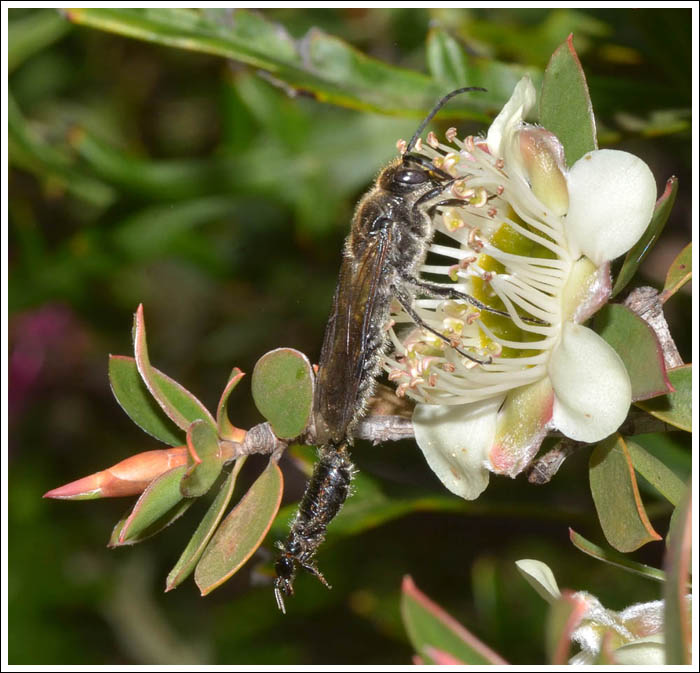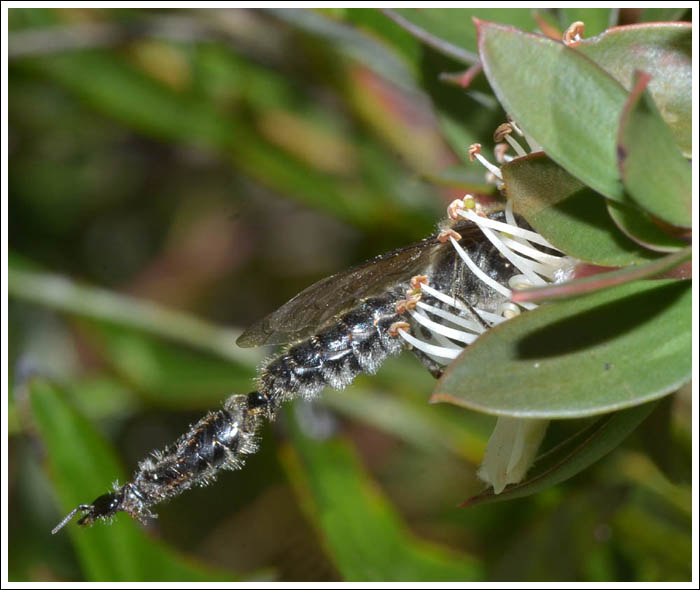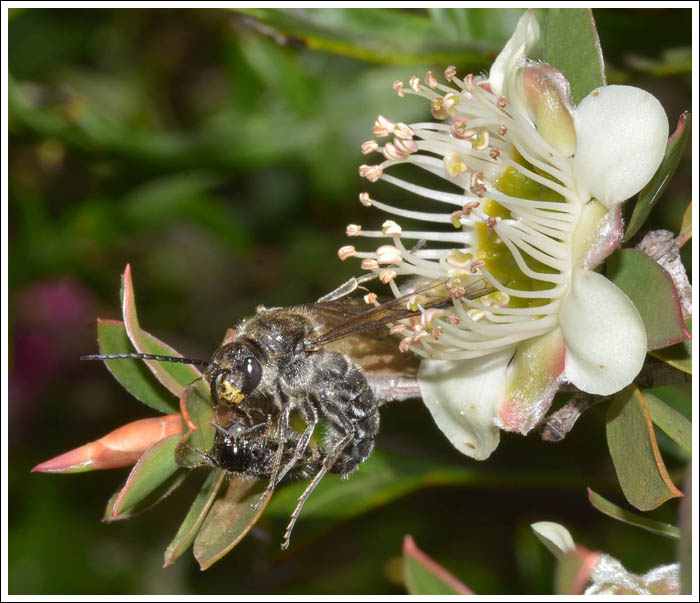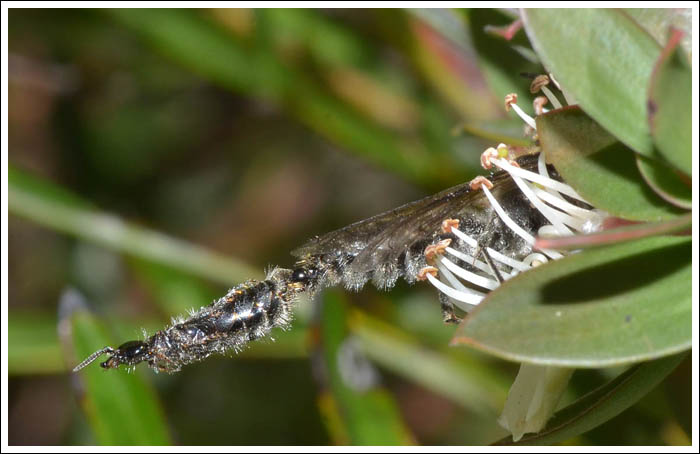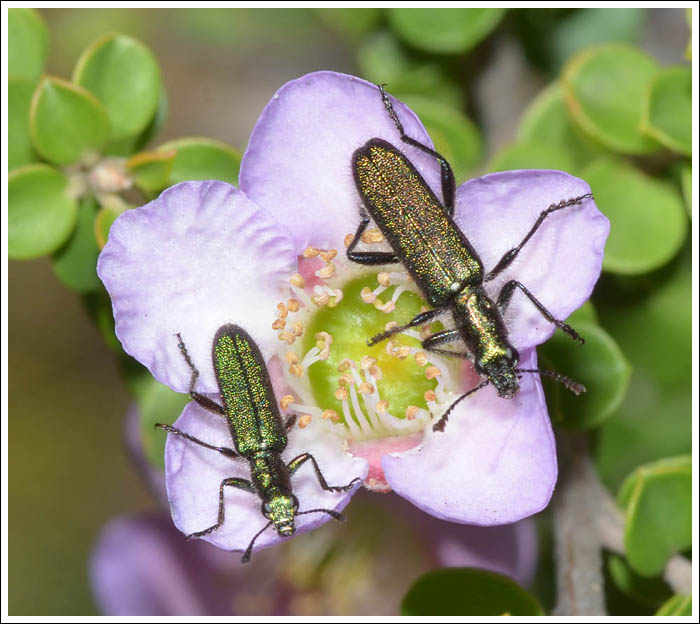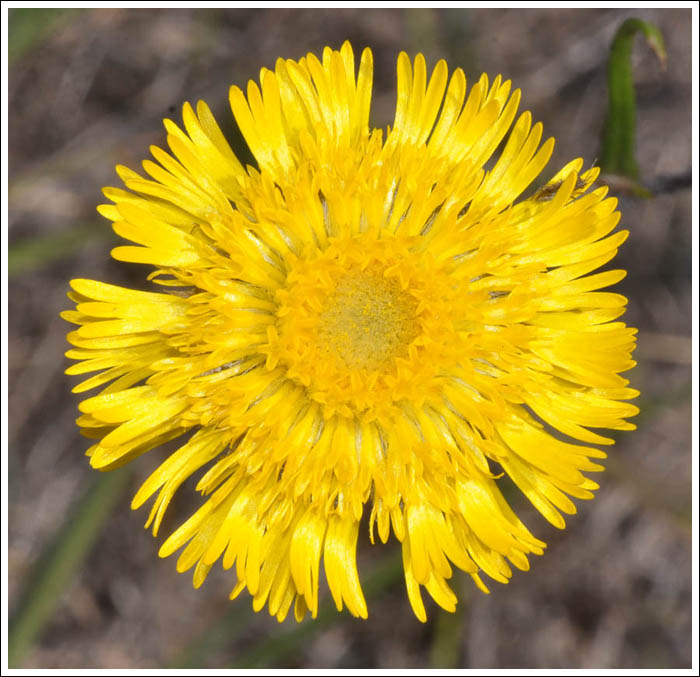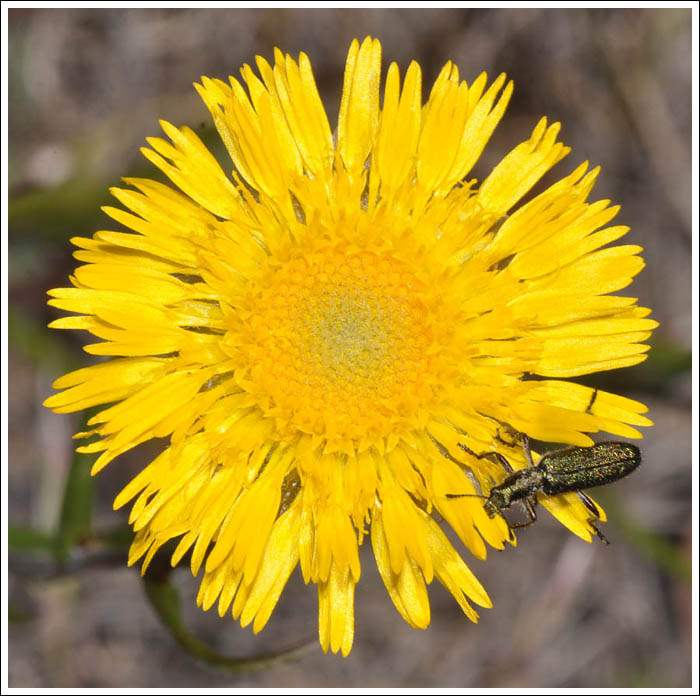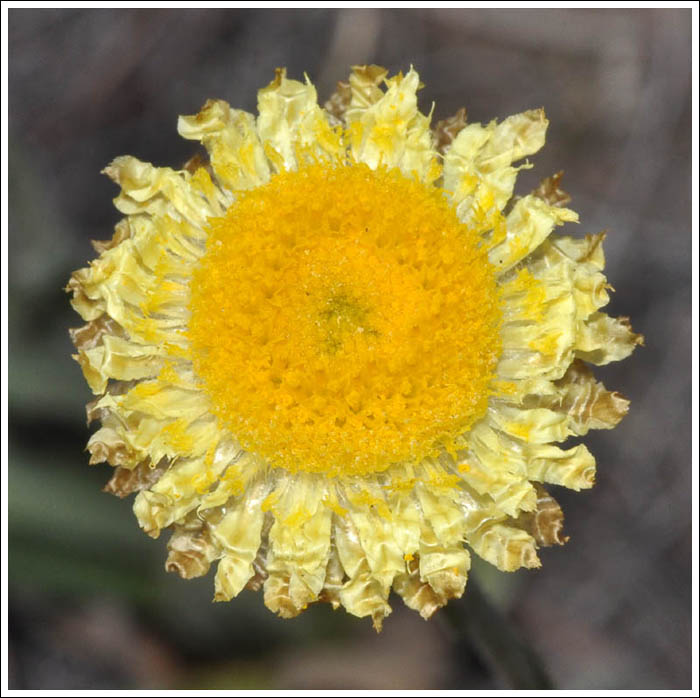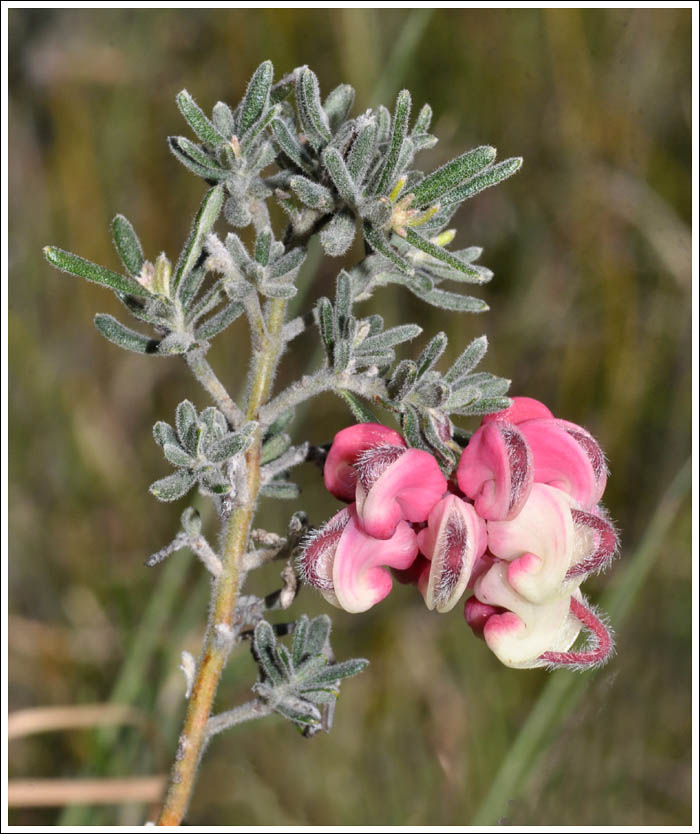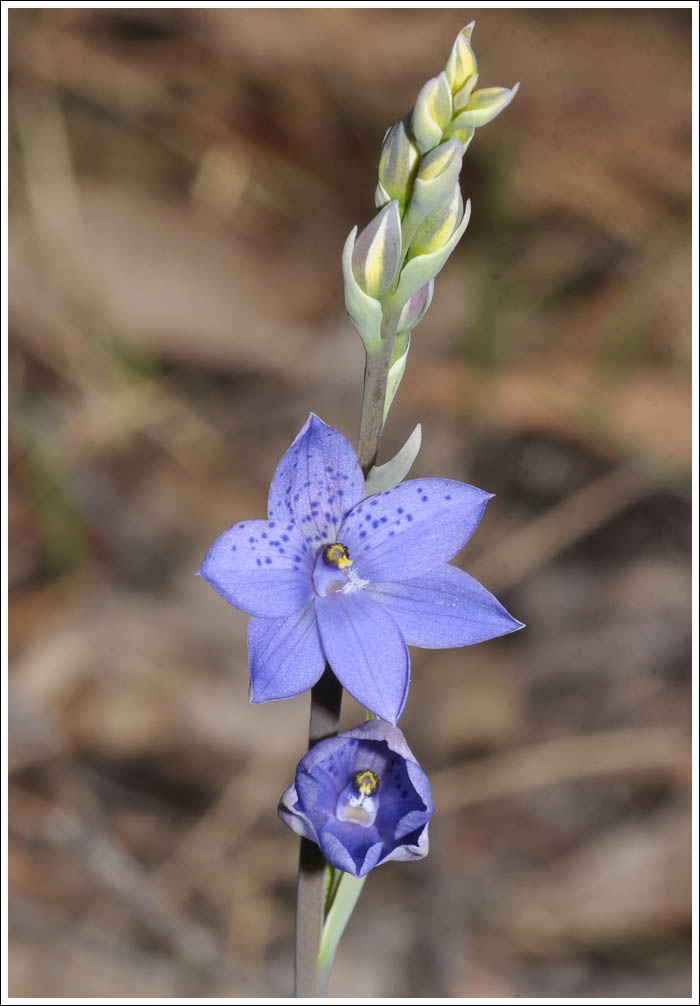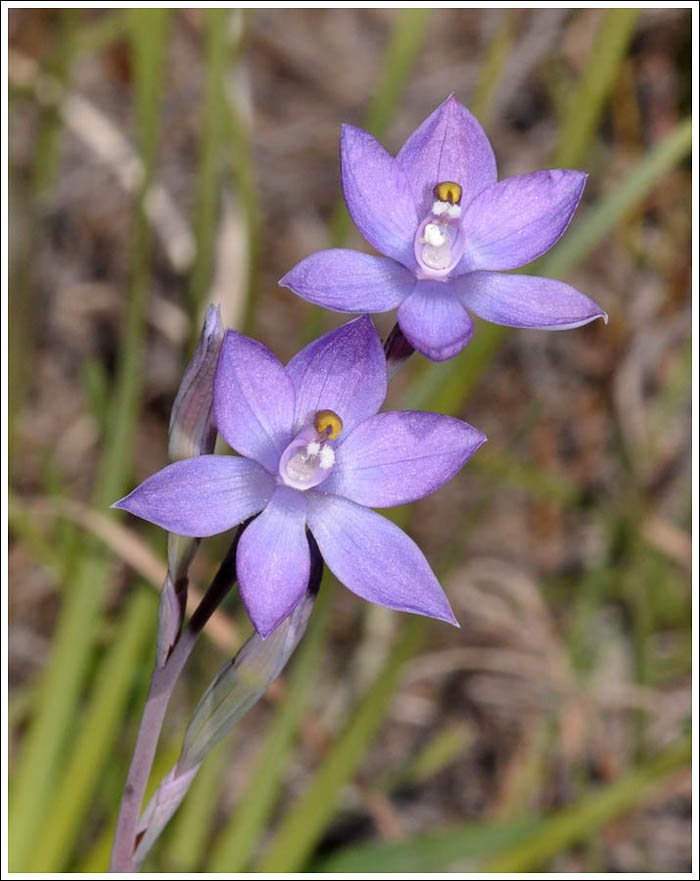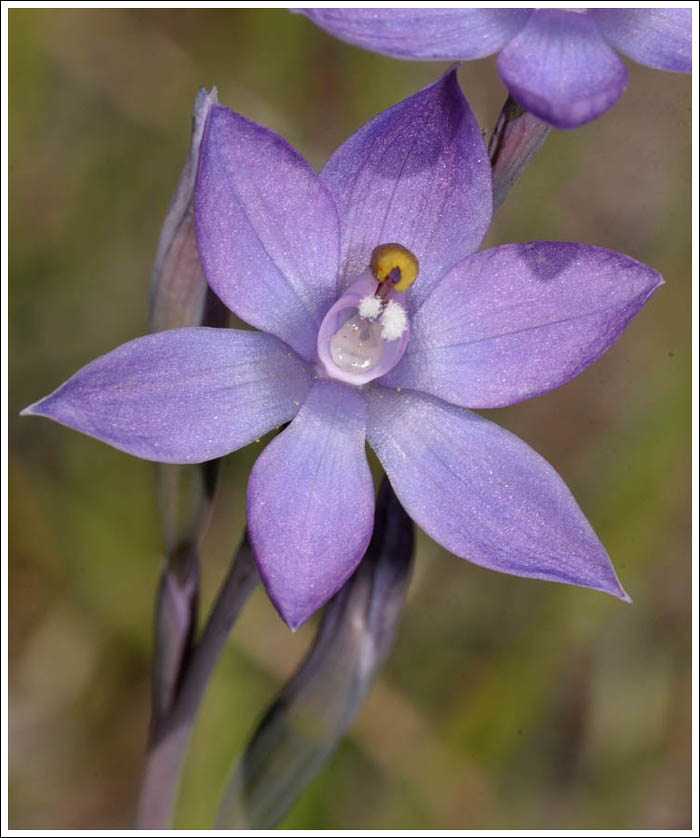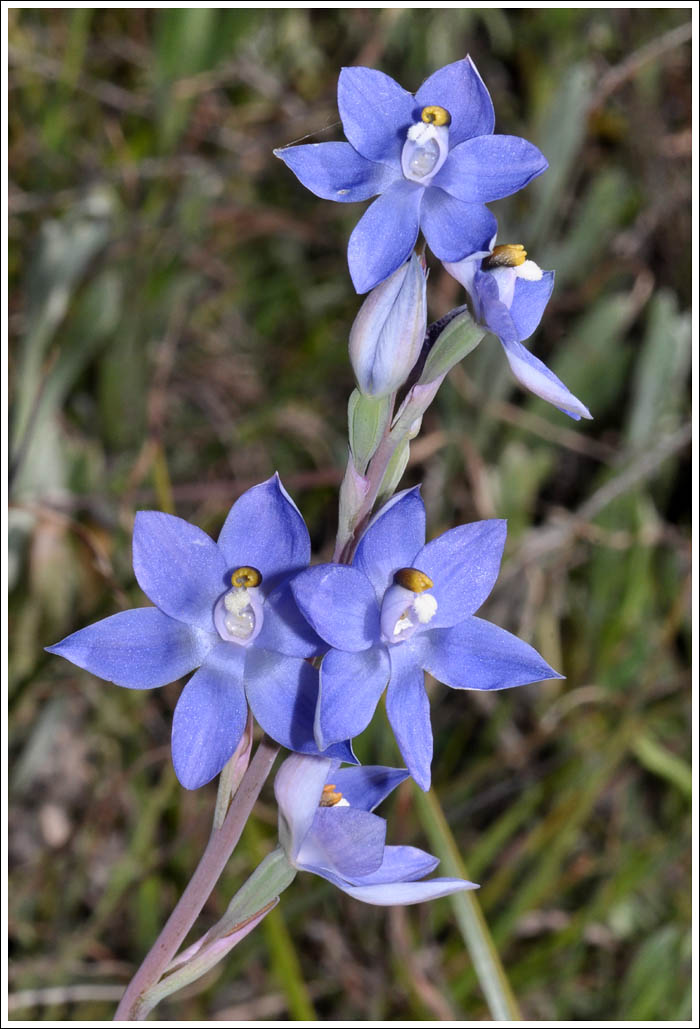A sunny day, the Leptospermums in flower, and a flitting of insects going from flower to flower partaking of the abundant nectar. Fast moving mating flower wasps were too hard to photograph on the rotundifolium, but easier on the nectar rich macrocarpum.
Male with attached wingless female.
Here the male is gathering nectar.
With which he feeds the female.
Female close up.
Sand wasps too are feeding and keeping up their energy levels while mating and digging nesting burrows in the hard dry ground.
A native bee, Hylaeus (Gnathoprosopis) sp.
And one of the many fly species attracted to the sweetness.
These beetles have been widespread and seen on many types of flower.
Click images to enlarge.

